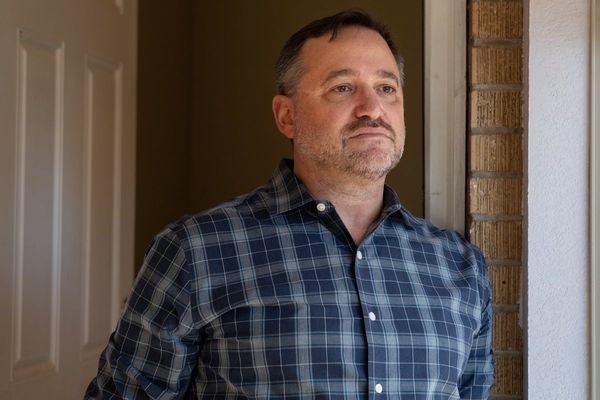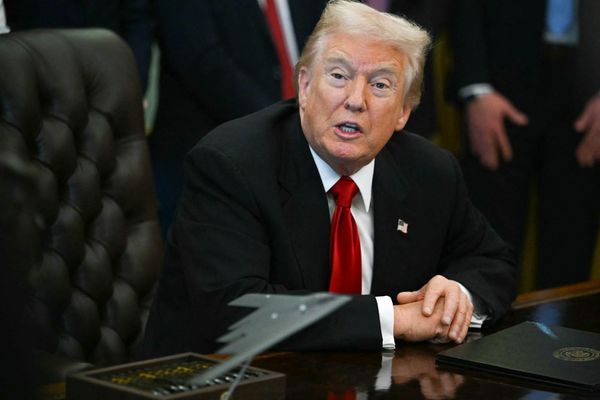
It is hard to imagine there will be a more important piece of work put out by the Albanese government in this term of parliament than the national climate risk assessment. It suggests that at more than 2C of global heating – a level we are headed towards on our current trajectory – the systems Australians rely on could start to crumble and collapse.
That’s an easy thing to say, but a hard thing to get your head around. There was a huge amount of information released on Monday, including an adaptation plan that is only the start of grappling with the problem, and it will take time to digest. But it is worth considering what the assessment led by the Australian Climate Service says about the country’s economic future if global emissions are not curbed and temperatures continue to rise.
Across three scenarios, it describes the likelihood of climate-driven events triggering “cascading shocks” to the financial system. Supply chains are likely to be disrupted, leading to goods shortages – a trend that has already begun in areas hit by floods and cyclones. Energy supplies and telecommunications could fail. Assets could be written down and loans defaulted across a region. Households and businesses then may not have access to finance, and the value of investments and superannuation could fall.
What happens then? The ramifications could make an increase in inflation or interest rates seem trivial by comparison.
Economic risks are just one focus of the assessment. It also details what rising temperatures will mean for health and social support systems, including a rise in deaths and hospital admissions from heatwaves, which already kill more people than all other forms of extreme weather.
On sea level rise, the assessment found that more than 1.5 million people could be living in areas at risk of coastal flooding in 2050. On the natural environment, it reinforces that Australia is likely to lose ecosystems and species by the middle of the century. This would be a tragedy in its own right, and could affect people’s access to clean air, water and food. Infrastructure, primary industries and national security could all face substantial disruption.
How does this square with the environment minister, Murray Watt, confirming on Friday he had approved a potential 40-year life extension for the North West Shelf liquified natural gas export facility, one of the country’s biggest polluting sites? Not easily, to put it mildly.
It could lead to new gas basins being opened and billions of tonnes of carbon dioxide being pumped into the atmosphere. The decision has prompted anger and understandable accusations of hypocrisy.
Asked about this as he released the assessment on Monday, the climate change minister, Chris Bowen, replied that the government had been upfront about the “complicated and complex challenges” of transitioning to net zero emissions. He then pivoted to use the assessment to frame the release of another big piece of government work – its 2035 emissions reduction target, which is expected within days.
On this, the minister made a forceful case for action. He said people were already living through the climate crisis, that it would have “compounding, cascading and concurrent” effects across the country, and touch the lives of every Australian. He repeatedly stressed that, no matter what other countries did, the “cost of inaction will always outweigh the cost of action”. We must get on with it, in other words.
Bowen argued the government’s seriousness on climate action would be “very clear” from coming announcements. “We’ll be holding the course on climate action because it’s in the best interest of our country. And we’ll be decarbonising our own economy, and we’ll be helping other economies decarbonise as well,” he said.
Right now, it’s anyone’s guess what “holding the course” will mean when cabinet meets to finalise the 2035 emissions target range – and there is no shortage of guesses. Bowen has cautioned not to over-interpret his comments on the subject. He said he did not receive the Climate Change Authority’s final advice on the target until Friday.
But he did set a benchmark earlier last week when he volunteered that the Intergovernmental Panel on Climate Change had found limiting global heating to 1.5C above preindustrial levels would require a 68% global cut between 2005 and 2035.
Developed countries such as Australia would be expected to do more than 68% for there to be any chance of that global average being met. Several analysts say it must stretch to 75% or beyond. But from the government’s perspective, Bowen’s statement was an acknowledgment that anything less than 68% could not be sold as consistent with climate science.
It suggests the minister believes a target range that includes at least that level of emissions reduction is necessary and achievable. The question is whether Anthony Albanese does.
Adam Morton is the climate and environment editor







